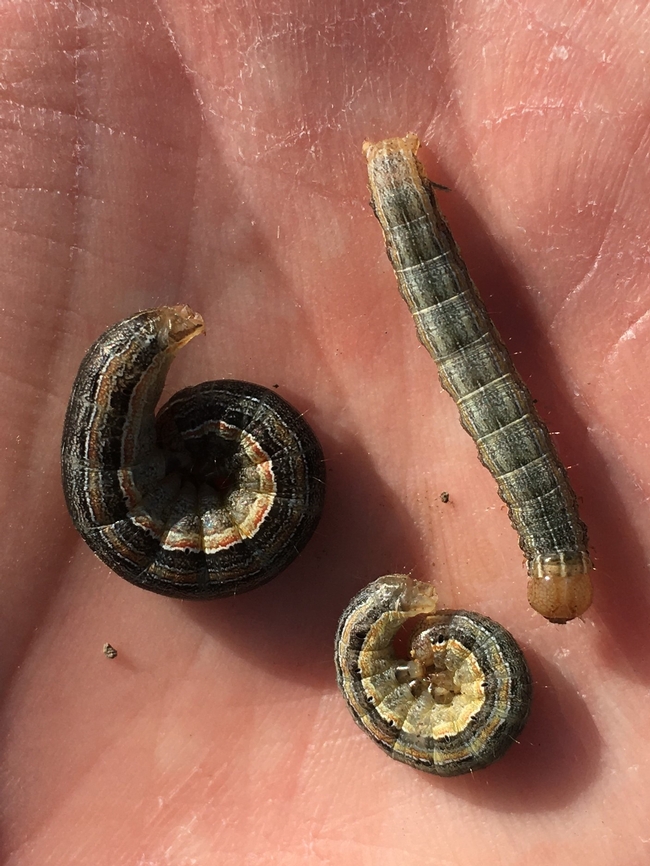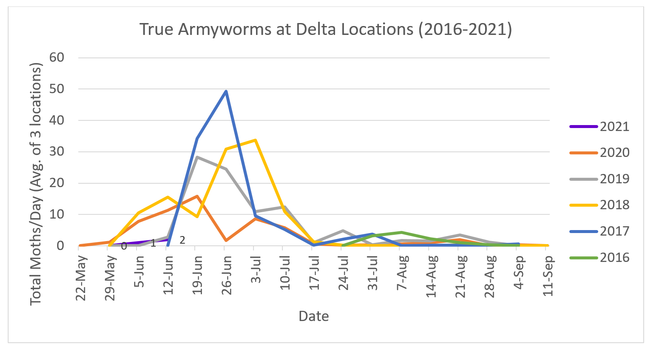
UC Cooperative Extension has responded to the problem by providing outreach on UC IPM guidelines for monitoring and treatment. We have also cooperated with the California Rice Commission on getting Section 18 emergency approvals of methoxyfenozide (Intrepid 2F), which has been approved for the 2021 season. (For more information, please contact your county Agricultural Commissioner's office.)
In cooperation with Luis Espino, Rice Advisor in Butte and Glenn counties, I have been monitoring armyworm populations in Delta rice since 2016. Monitoring involves scouting for damage and deployment of pheromone bucket traps that catch the moths. As of the week of June 14th, trap catches in the Delta are still low – about two moths per day – but there is some variation across locations, with lower Roberts Island having higher catches than Wright-Elmwood Tract and Staten Island. Over the years, the peak trap catches have occurred from the middle of June to early July (Figure 1), so now is the time to ramp up monitoring.
In previous years, we have trapped for both true armyworms and western yellowstriped armyworms. It appears, however, that the true armyworms are the ones that damage rice, so this year, we have focused our trapping on them. There are three locations in the Delta, and at each location, there are three traps that span adjacent fields. Therefore, we're able to monitor population variation within locations and across locations.
Armyworm larvae can grow to full size in three to four weeks. Because small armyworms are hard to scout and large armyworms are hard to treat, we use trap counts and Growing Degree Day modelling (i.e. a temperature measure of time) to determine when the worms are “just right” to treat. (Pardon the Goldilocks reference!) During the season, Luis writes a weekly blog to provide real-time information on trap counts to help growers and consultants with scouting and decision-making. This year, he is also using an interactive mapping tool called Ag Pest Monitoring, which you can use to view counts in real-time and across trapping locations. Please consider subscribing to Luis Espino's blog.
Figure 1. 2016-2021 Delta armyworm trap counts. The trap counts represent the number of moths caught per day, averaged across three Delta locations. The 2021 counts are still low, averaging just two moths per day during the week June 14th, but now is the time to intensify monitoring since peak populations tend to occur between now and early July.
